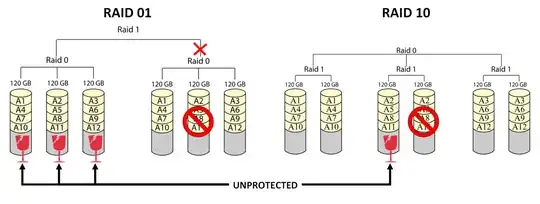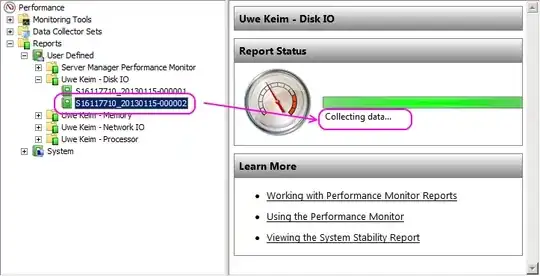The 2nd example is not RAID 1, but nested RAID 0+1, mirror of stripes (as 10 is stripe of mirrors).
While it is obvious what's the difference between RAID 0+1 and RAID 1+0 with an odd number of disks, it gets more confusing with an even number of disks. It works exactly the same way with 2, 4, 6 and 8 disks, but I'll use a six disk setup for a clearer visualization:

As you can see, you'll end up having very similar disks. With both configurations, you have n/2 capacity, 50% storage efficiency, there isn't huge difference in overall performance, both can always survive one failed drive without data loss, and the theoretical maximum for failed drives for both is n/2.
Yet, RAID 10 and 01 are not identical. During a failure RAID 10 has significant advantage: in a one drive failure all the other mirrors are unaffected, while RAID 01 loses an entire RAID 0 stripe. On a failure RAID 01 leaves half of the drives unprotected, while RAID 10 only leaves its partner.

Scott Alan Miller describes this difference in failure and rebuild in detail and comes to clear conclusion:
Because of the characteristics of the two array types, it is clear
that RAID 10 is the only type, of the two, that should ever exist
within a single array controller. RAID 01 is unnecessarily dangerous
and carries no advantages.
Jeffrey B. Layton, in his comparison, looks at the same situation from a perspective of rebuild time:
In the case of RAID-01, you need to access all of the remaining drives
in the array to rebuild the loss of a single drive. The reason is that
you have a RAID-1 across two sets of drives that are RAID-0. The loss
of a single drive means the entire RAID-0 group has failed.
In the case of RAID-10, if a drive fails, the only it’s pair drive is
accessed.
- RAID-01: Amount of data read & written = (n/2) * single drive capacity
- RAID-10: Amount of data read & written = single drive capacity



